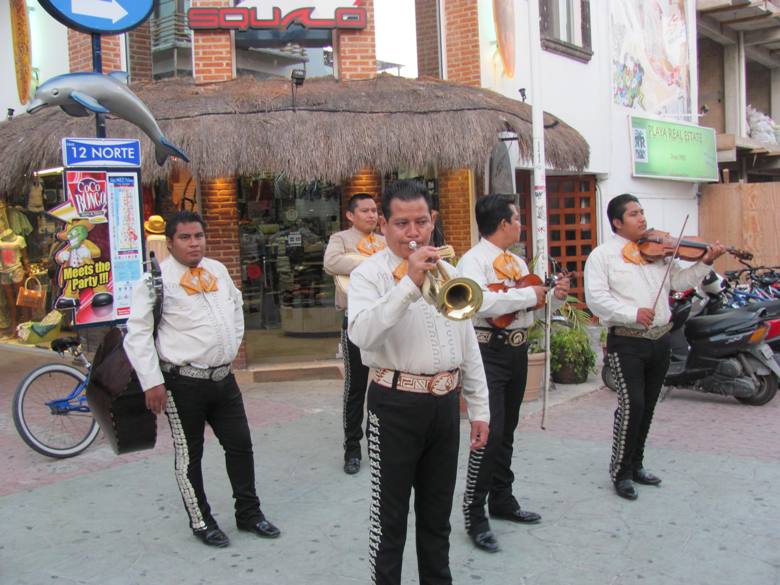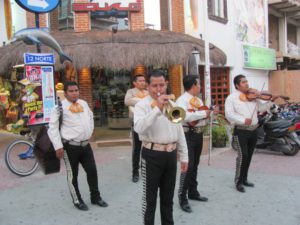DAY 4 — I am lying slathered in local honey on a mattress that’s been placed on a six-foot piece of local carved wood. The ancient Mayans, I learned, believed that this honey from the stingless Melipona bees only found here in the Yucatan Peninsula had many medicinal properties. In fact, the honey used in the treatment is bought from local Mayans.
Here at the Fairmont Mayakoba’s (www.fairmont.com/mayakoba) beautiful 21st century spa—located in the heart of a tropical jungle on a natural lagoon — I’m told that in a traditional Mayan ceremony honey is used to remind us of the sweetness of life. The traditional blessing “all good things, no evil, honey in the heart and 13 thank-yous’’ inspired this treatment. In case you are wondering, the honey is removed with a rainforest rinse under a Vichy shower of seven spigots.
The spa is designed to teach guests about Mayan traditions and feature local herbs, oils and extracts –everything from a rain ritual to a chocolate wrap and Mayan clay purification. I’ve also never visited a resort spa with such an attentive staff.
Yes this is a big hotel–over 400 rooms with four pools, beach and a golf course and so spread out that you need a ride in a golf cart or on a bike (they are complimentary) to get around. But local officials say the hotel has taken a lead in sustainable tourism—and even has an on-site biologist Lyn Santos to direct its efforts.
She takes us on a boat tour through the Mangroves—the majority of the hotel is not ocean front but built behind the mangroves which provide a natural buffer between the ocean and the buildings.
These lagoons and canals which cost some $500 million are now home to 160 species of birds, 40 different mammals and fish.
The hotel takes green initiatives seriously. When the hotel was built, some $500 million was spent just on these canals- preserving the underground river system and replanting as much vegetation as possible. To date, more than 1,500 trees and 10,000 plants have been located. Drought-tolerant, native plants have also been added to the hotel gardens. The plants conserve water, as they are highly adaptable to the weather conditions of the area and do not require extensive irrigation or care.
When a cenote (underground stream) was discovered in the middle of the golf course, it was integrated in the design.
Meetings are “green” which means there are no disposable napkins, plates or cups and paper is kept to a minimum.
Kids at the Kids Club—and each child gets three free hours free daily—are taken on a tour of the hotel to see how machines in the laundry use less water and electricity, how paper is recycled into notebooks—even in the kids club, recycled paper has been fashioned into o checker pieces and play food painted bright colors.
The bathrooms are designed with natural light so it is not necessary to turn on lights during the day—the AC goes off automatically when a door is opened. When I asked why they still use plastic water bottles (though they are recycled) Lyn told me plans are in the works to launch a project with reusable water bottles.
As part of an ongoing commitment to local Mayan communities and their sustainable and economic growth, the hotel purchases products, including sustainable lobster, handcrafts, honey and some organic vegetables, directly from local vendors including sustainable lobster from the Punta Allen fishermen community within the Sian Ka’an Biosphere Reserve. Punta Allen fishermen apply special techniques to capture the lobster in a sustainable manner, thus maintaining and even increasing its population.
A Low Carbon Tourism Initiative at Cancun and Riviera Maya, launched by WWF and some local partners (including Fairmont Mayakoba) promotes the application of specific actions to diminish the emission of CO2 among other hotels at the destination.
Along the Riviera Maya south of Cancun, you have your choice of more than 300 hotels (some 38,0000 rooms from tiny 15-room beach front hotels like the Playa Azul in Tulum to Massive all inclusive to upscale condos like the Condo Hotels (http://www.condohotelsplayadelcarmen.com/) right in the heart of Playa del Carmen with its pedestrian Fifth Avenue and small luxe resorts like The Tides ideal for a honeymoon or special adult getaway (www.thetidesresorts.com), where you are cosseted in individual casitas surrounded by jungle greenery.
Many people think your only options are big all-inclusive resorts. Actually, 75 per cent of hotels here are smaller than 100 rooms but the all-inclusives represent the majority of the hotel rooms.
The Fairmont wants its upscale guests—whether they are here for business or pleasure (the kids we saw were certainly enjoying the big family pool with its waterslide) to have a more individual experience—from the chance to purchase local Mayan handicrafts to the opportunity to visit the Sian Ka’an Bio preserve with local Mayan guides (www.siankaantours.org).
The hotel has just made a $10,000 grant to help supporta Mayan museum. “We want to support the authentic local experience,” explained Santos, pointing out the lovely wooden boxes, woven sisal place mats and bags.
At the breakfast buffet, there is effort to serve regional foods as well as bacon and eggs- tamales and sopas (small fired tortillas topped with beans, cheese and squash blossoms, local fruits like Pitawga (small pink fruit with black seeds) and Maracuya (small yellow fruit). There is a chef’s garden showcasing local herbs like cilantro and fruits—that hopefully might inspire guests to go home and start their own garden, Santos said.
The special honey used in my spa treatment was used in ancient trade a well as a natural antibiotic for everything from cataracts to throat infections. All I can tell you is it made my skin feel great.
That evening, we headed a five-minute cab ride away into Playa del Carmen. “When I came here as a boy, there was nothing here,” said our cab driver Fernando Morales. He’s talking just 20 years go — hard to believe the sleepy fishing town has evolved to a trendy (but still fun) tourist center with two ferries to Cozumel (the area boasts the second largest reef after Australia), hotels and a restaurant scene that spills out onto the sidewalks. (We ate at Mosquito Blue, people watching.)
We visit the four Condo Hotels built by New Yorker Jack Perlman and a partner—ideal for those who want to be in the center of town and are independent travelers but also want the amenities of a resort—a concierge, spa, gym even delivery service for groceries. I loved the units with their thatched decks overlooking the ocean at the El Taj Oceanfront.
Some 250,000 people now live in and around Playa “but it has been growing in the right way,” says Morales. “And it is safe. Once people get here, they relax,” our cab driver said.
We sure did.


